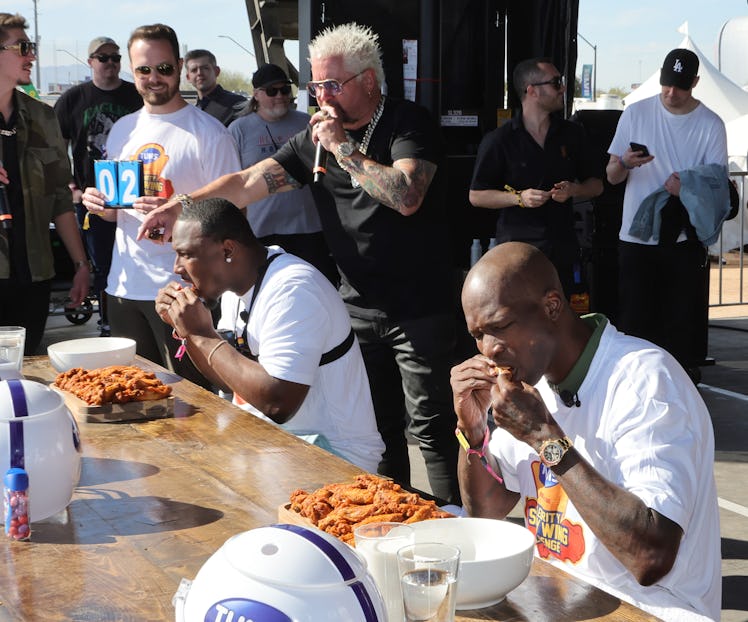‘Dude Food’ Has Gone Too Far And It’s Hurting Families
It's masculinity in a meal, and it's teaching your kids harmful stereotypes.

A cheeseburger as big as your head, succulent smoked meat, and anything wrapped in bacon — who do you picture eating these foods? If marketing has done its job, you’re probably imagining a man. Think Guy Fieri serving up a massive platter of spicy wings — absolutely loaded with calories, salt, and saturated fat — to a bunch of guys, with no women in sight. In other words, you’re thinking of dude food.
But you can’t just blame marketing for this stereotyping. Masculine “norms,” gender inequity in the kitchen, and straightforward aggression all pile onto the triple-bacon-cheeseburger that is dude food, a phenomenon studied with a voracious appetite by Emily Contois, Ph.D. A scholar of food, media, gender, and identity at the University of Tulsa, Contois is the author of Diners, Dudes, and Diets: How Gender and Power Collide in Food Media and Culture. She’s spent years researching how marketing (and limiting ideas about masculinity) have influenced dude food, culinary creations that push culinary boundaries to the extreme. And she’s worried about not only how gender shapes dude food, but how dude food reinforces harmful ideas about gender.
The most obvious problem with dude food is the physical effects it has on the body. The typical offerings of a Super Bowl buffet are heavy in saturated fats and calories and low in fiber. This can lead to weight gain, constipation, and lethargy. Eating a diet of red and processed meats increases a person’s risk of heart disease — the leading cause of death for men in the United States — and cancer. There’s a reason why the host of Man v. Food couldn’t keep eating giant steaks and ghost peppers forever.
But there are also side effects that go beyond the individual, to impact our society, our families, and our kids.
“I came to define ‘dude food’ as comfort food with an edge of destruction,” Contois says. There’s nothing wrong with enjoying a quadruple patty burger called the Four Horsemen of the Apocalypse during a night out with the guys (if your stomach can handle it), she says. But defining the male appetite as a destructive force and positioning bacon-wrapped, calorie-dense foods as “manly meals” can do a number on kids’ thinking, Contois explains.
For one, this mindset can make mom the villain at the dinner table. If dad’s night means mac and cheese with bacon bits and hot dogs, how is mom going to win any love with her (much more sensible) salmon and broccoli? Furthermore, if food is all fun all the time with dad and just day-to-day with mom, we’re serving up a recipe for an unhealthy — or at least confused — relationship with how boys should eat compared to girls.
Contois says the future of dude food isn’t about making things spicier, bigger, or messier, but about making room for a broader definition of masculinity within food culture that includes (and encourages) fatherhood. She points to Food Network star Guy Fieri as a prime example of how we can right this ship.
“He went kind of novel in performing fatherhood for the Food Network,” she says. Fieri’s son has appeared on his show from the man’s very first Food Network audition tape. Since then, he has been attempting to bring the realms of restaurant and home together. He’s always presented food as something to connect over, rather than to conquer.
Sure, Guy Fieri and his son Hunter eating loaded nachos piled high with carnitas cooked in lard and bacon fat is a prime example of dude food. But it’s also an illustration of a dad who loves his son, travels with him, invites him into his world, learns to cook with him, and bonds with him over food.
Fieri’s journey to Flavortown included his family, marrying dude food with domesticity. He proves that fathers can love dude food and their kids at the same time — and sometimes at the same table. Maybe dude food isn’t the healthiest thing they can cook for their kids, but it’s more than just the food that matters.
Maybe it’s time to rebrand dude food as something not to be attacked and conquered, but something to be shared.
This article was originally published on